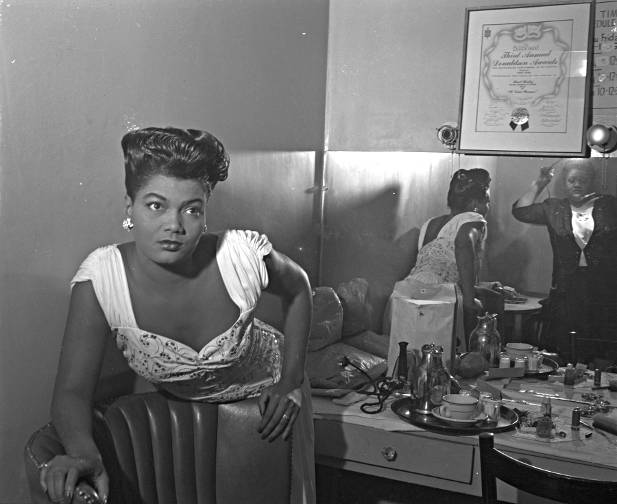Gospel singer Mahalia Jackson (1911-1972) became involved with the Civil Rights movement during her friendship with Dr. Martin Luther King, Jr. She sang at the Prayer for Pilgrimage for Freedom civil rights rally in 1957 on the third anniversary of Brown v. Board decision, and just before Dr. King’s “I Have A Dream” speech in 1963.
Image information:
Mahalia Jackson singing in church
Baltimore, Maryland
February 1949
4 in. x 5 in. acetate negative
Paul Henderson Photograph Collection, HEN.01.10-016
Maryland Historical Society
Who or Where? Do you know the name of the Baltimore church in this photograph? If so, please fill out the online Henderson Collection ID Survey.

![Group portrait [NAACP lawyers with Esther McCready and others], 1950. Paul Henderson, HEN.02.07-019.](https://hendersonphotos.files.wordpress.com/2013/02/hen_02_07-019.jpg?w=730)













